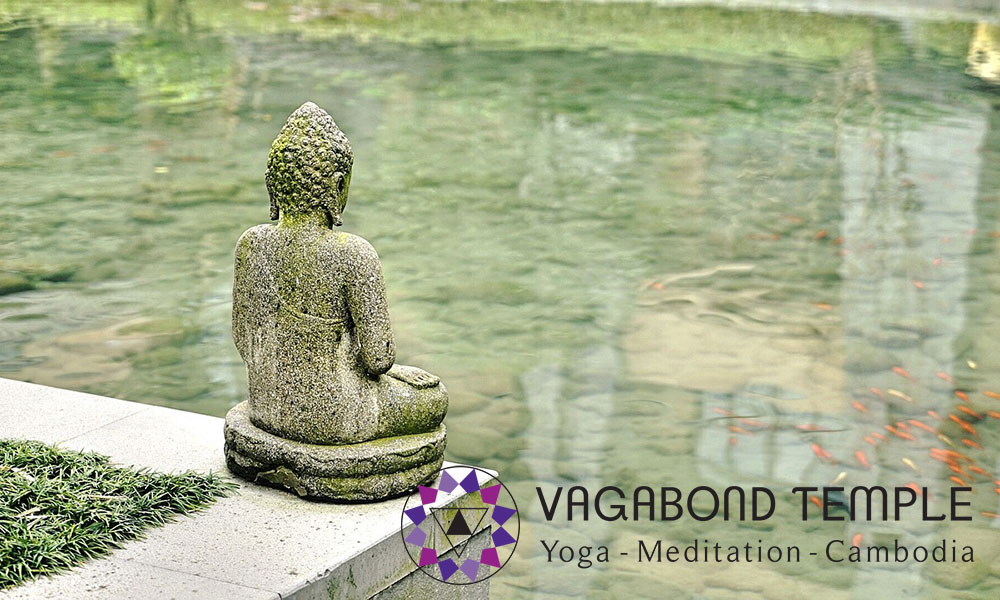Diagnosing Life: The Four Nobel Truths

If you wake up with a pounding headache and a churning stomach you are probably going to want to know why. Maybe that frenzied all-night drinking session was not such a good idea. Or perhaps that lovely little restaurant you just discovered is not so lovely after-all and you’ve been poisoned. Or maybe that stranger you kissed on the bus has given you the flu. Anyway before you start promising to never drink again, suing somebody, or calling a doctor – you really need to know the cause of your predicament. Once we get the right diagnosis we can choose the right medicine.
It isn’t just with medicine, whenever there is a problem (and in life there seem to be many!) the obvious approach is to figure out the cause. Human beings are excellent problem solvers (in fact we are almost as good at solving problems as we are at creating them!). But how many people have tried to apply this problem solving ability to fundamental problem of life itself? The answer is… not many people, but one person who gave it a go was the Buddha. Actually “Buddha” is not really a name like “Steve”, “Dave” or “Gertrude” – it is actually a title meaning “The Awakened One”. If the Buddha is the awakened one then that means the rest of poor fools are asleep – dreaming up an endless series of nonsense that prevents us from finding any lasting peace.
According to the Buddhists there have been many Buddhas and many more will come to try (with varying degrees of success) to wake us up – but the Buddha you usually here the stories about was a prince by the name of Siddhārtha. His father had heard a prophecy that Siddhārtha would grow up to be a great spiritual teacher; since nobody wants a hippy for a son, steps were taken to ensure the young prince was surrounded by such luxurious distractions that he would never dream of becoming one of those shameful long-haired vagabonds. So there he was living in a big fancy palace, chilling out on silk cushions with sexy-dancing girls (imagine a hip-hop video but with more incense and lotus-flowers). However one day, when out on an excursion he saw an old man, a sick person, and a dead body (what a lovely day out!). This got him thinking that maybe this world is not so great after all. After that, no amount of twerking concubines could hold his attention – as he had seen the truth that nothing lasts forever he started to see that pleasure seeking was simply an illusion, kind of like playing a video-game (it may seem exciting but really you are just staring at a screen getting fat when you really need to be doing the dishes). So Siddhārtha left the palace to embark on the spiritual journey that would eventually lead to his waking up.
Initially he followed the spiritual fashion of the time which, in ancient India, meant extreme renunciation (think living in caves, sleeping on beds of nails, fasting to near starvation etc). However he came to realise that all he had simply gone from one extreme to another – instead of being distracted by pleasure he was distracted by pain. Trying a different approach, he sat in meditation intent on solving that most fundamental of problems – how we are to find peace in a world where nothing lasts forever? In the same way a doctor examines a patient (starting with the symptoms and going on to their cause and proposed treatment) he examined the nature of reality itself and, after 6 days, delivered a famous speech that has influenced millions and millions of people ever since.
The Four Nobel Truths
What Siddhārtha revealed after waking up and becoming the Buddha was known as the four-Nobel truths – these form a kind of diagnosis and treatment plan for all of us.
1) Dukkha
This means dissatisfaction. You may have felt this, this feeling that whatever you do, you never quite feel complete. This does not mean you should run to the doctor and demand industrial strength anti-depressants, it may mean that you are starting to wake up! We are hungry, we eat, then we are hungry again. We can acquire new things, new relationships, new careers, move to a new place – but any type of satisfaction will be short lived and we will feel compelled to change something else. You can try many things to fill the void: alcohol, drugs, social-media, shouting at strangers in the park… but ultimately it does not work – as you will realise when you wake up hungover in a police cell! This type of dissatisfaction is the symptom that the Buddha became aware of, in the same way it has led many others (perhaps even yourself) to look to spirituality for answers.
Sometimes Dukkha is translated as “suffering”, which gives us a rather gloomy view of Buddhism (that it views as a kind of endless torture we must escape from). This view of Buddhism is popular with miserable people looking for an additional excuse to be miserable… but ultimately it is incorrect. Really we can think of Dukkha as the inability to be in an optimal state – a kind of perpetual incompleteness.
2) Avidyā
Once the Buddha had identified the symptom, he looked for the cause and found it to be Avidyā which means ignorance (literally “not seeing”). This ignorance is taking the illusion for reality: sitting in your underpants playing Farmville oblivious to the fact you are about to get fired for being late to work again and that your partner has packed up and left. Nothing lasts, even our bodies will die one day, all experiences come and go – yet we treat all of these transient things as if they are solid and permanent – engaging with the illusion. This is what causes the dissatisfaction.
Often our ignorance is wilful – we choose to ignore what we do not wish to see. The philosopher and loveable rogue Alan Watts pointed out that it is not so much ignorance, more like ignore-rance. Often we know something is not going to fulfil us, or even harm us yet will still do it (like eating an entire tub of icecream at 3am).
The idea of reality as an illusion not just some fluffy Eastern-philosophy, it is backed up by science. We now know that the apparently solid physical world is made up of tiny, constantly moving molecules – themselves made up of energy – which quantum physics is now showing does not appear to exist independently of our perception of it (which is pretty mind-bending when you think about it).
3) Nirvana
Just as Dukkha (dissatisfaction) the Buddha became aware of a state where there is no dissatisfaction. This state is “enlightenment” where the person is no longer caught up I the illusion. There is a misconception that the enlightened person floats up into the clouds, or dissolves into infinity – but really it is not so dramatic. Seeing the true nature of things does not mean we will no longer have experiences. An enlightened being will still experience pain as the conditions that cause pain will still exist (i.e. having a body which ages, slipping on a banana skin etc.). The pain is still there, but realising it as an illusion the person no longer suffers. One analogy is a tree: the wind will shake the leaves but the trunk will stay steady.
Take the Dalai Lama, considered by many to be an enlightened being. This man is no stranger to suffering – he had to flee his home-country under very frightening circumstances and has spent a lifetime fighting (non-violently!) for the oppressed Tibetan people. He did not disappear into a cloud of smoke – if he had, he would not have been able to help so many people!
While we are being all metaphorical, another good one which was used to describe Nirvana is a rice-field filled with water. The field is full of water but flood is contained. This tells us that (a) rice was a very big deal when these teachings were first written down but more importantly (b) that Nirvana relates to our capacity to contain life – to hold it together whatever is thrown at us.
4) The Nobel Eightfold Path
Having identified the symptom (dissatisfaction) the cause (ignorance) and what it would be like to be free (enlightenment) the Buddha then went on to give his prescription – the instructions how to get out of the illusion. To be a Buddhist involves a lot more than shaving your head or sitting cross legged doing nothing… it is actually a very active path with lots of aspects. The Nobel Eightfold path can be thought of as a set of recommendations (rather than the type of guilt-tripping commandments found in other religions).
This path is the “middle way” – so instead of blindly pursuing pleasure and avoiding pain like “normal” people do, or trying to renounce the world and punish the body like a crazed holy-man, we are to work with the world. By taking charge of how we think and what we do, we can wake up from the illusion.
If you are interested in learning more about the Nobel Eightfold path there are plenty of articles and books out there, but for you lazy seekers here is a very brief guide.
1) Right View
Seeing reality for how it is, not how it appears to be. There is a trippy feedback loop between this and the other 7 points: once you have the right view, the others will come naturally, and practicing the others will help you get the right view.
2) Right Thought
The mind produces a lot of thoughts, many of them completely unhelpful. This is about clearing out the mental clutter and replacing it with kind and wholesome thoughts. Like all actions, thoughts have consequences. A positive thought can be healing to yourself and others, a negative thought… well not so good!
3) Right Speech – Making sure what comes out of your mouth is kind and honest.
4) Right Action – It’s no good to be all talk and no trousers, so this one is about embodying values such as compassion and wisdom instead of just reading a bunch of spiritual books. It could be giving to charity, avoiding actions that harm others – basically doing the things that nice people do!
5) Right Livelihood – If you are a pimp, drug-dealer or you work in marketing, it may be time for a career change.
6) Right Effort – Waking up isn’t easy, this one is about having courage and being willing to make the effort needed to move in the right direction, but without pushing yourself to far like one of those naked holy men sleeping on a bed of nails.
7) Right Mindfulness – If the mind is aware (i.e. of your body and surroundings) we will not be carried away by greedy or angry thoughts.
8) Right Concentration – This is the ability to focus your attention on a single object, easier said than done but essential if we are to avoid getting carried away by the mind.
The Buddhist teachings help us to see that everything is connected, and the same applies to these 8 recommendations – they all feed and support each-other. For example, if you see things how they are (Right View) your thoughts, actions, and speech will automatically become wholesome.
Keeping It Simple
Spirituality can be a very complicated subject, with many traditions each of which would take a lifetime of study to get your head around. However it can help to look at it in a very simple way and ask what is the problem that we are trying to solve? Or what are the symptoms we need to get rid of? From the Buddhist perspective the symptom is dissatisfaction, the cause is ignorance (not seeing reality). And the good news is that there is a solution. This may seem almost too simple, but perhaps it is simply our ignorance that causes us to try and over-complicate everything!



